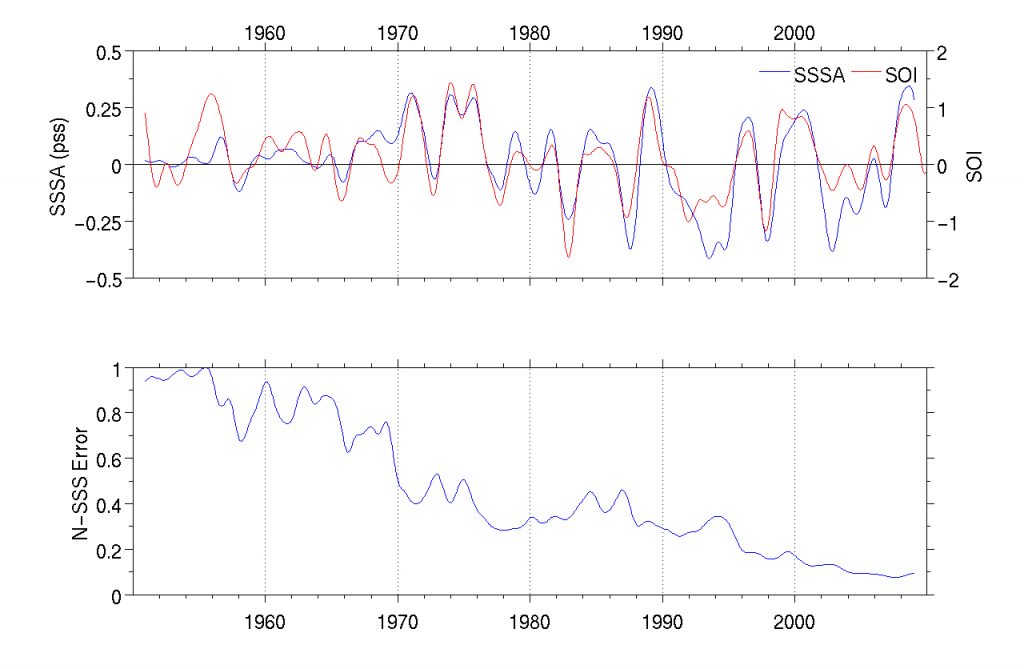Numerous past studies indicate that notable changes in sea-surface salinity (SSS) in the western Pacific warm pool and in the South Pacific Convergence Zone occur at the interannual time scale, in relation to ENSO events (1).
This is illustrated below for the western Pacific warm pool in Figure 1 showing the interannual anomalies in SSS averaged over a key area versus the well-known Southern Oscillation Index (SOI) which record the occurrence of El Niño (SOI<0) and La Niña (SOI>0) events. It clearly shows negative SSS anomalies during El Niño events, mostly reflecting the eastward displacements of the low-salinity western Pacific warm pool, and vice versa during La Niña events (2). The correlation coefficient between the two low-pass filtered monthly time series is R=0.88 over 1971-2009, with the SOI leading by one month, therefore stressing that the SSS time series in that specific region can be used as a relevant climatic index for ENSO. More details about the use of SSS time series to monitor and analyse ENSO-related changes can be found in (3).

1 e.g., Delcroix and Hénin, J. Geophys. Res., 1991; Gouriou and Delcroix, J. Geophys. Res., 2002.
2 Delcroix and Picaut, J. Geophys ; Res., 1998; Picaut et al., J. Geophys. Res., 2001.
3 Singh et al., J. Geophys. Res., 2011.
4 Delcroix et al., Deep Sea. Res., 2011.
5 Singh and Delcroix, Geophys. Res. Let., 2011.
